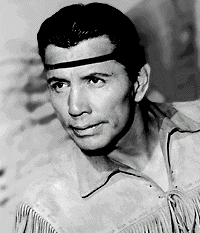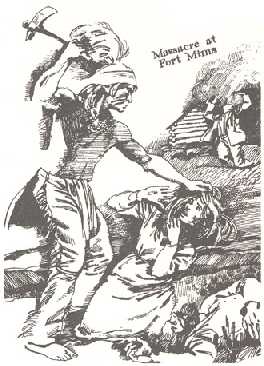 Another Stereotype of the Month entry:
Another Stereotype of the Month entry:
 Another Stereotype of the Month entry:
Another Stereotype of the Month entry:
Student Newspaper Article Causes Concern
by AP, The Associated Press
Roseburg, Ore. (AP) _ Members of the Cow Creek Band of Umpqua Tribe of Indians are upset about an article in Roseburg High School's student newspaper, which referred to the school's American Indian emblem as "Tonto" and alleged that tribe members used drugs and scalped people.
Sherri Shaffer, the tribe's chief executive officer, called district superintendent Lee Paterson after she read the story.
"There's nothing more insulting to a Native American than calling him Tonto," she said.
James Osborn, the 18-year-old assistant editor of The Orange R, said he wrote the story as a satire after hearing rumors of changes to the school's emblem.
Osborn said he was trying to make a statement about the harm stereotypes can cause, but in conveying the message it "somehow got warped."
The school has used the image of an Umpqua Indian as a symbol for the past 100 years, Paterson said, but is planning to redesign the coat-of-arms and letterhead in order to be more culturally sensitive.
"The unofficial message is that we want to move away from anything that might offend," he said.
The emblem recently featured in The Orange R shows a male Umpqua in profile, wearing a single eagle feather in his braided hair. Beneath him is a shield and an ax crossed by an eagle feather-adorned peace pipe.
Shaffer said the student newspaper story gave a distorted view of the customs and habits of local American Indians, pointing specifically to her female ancestors who smoked prayer-pipes.
"They certainly weren't taking any drugs," she said. "It was something spiritual. It was meaningful."

Journalism teacher Gwen Bartlett said students are generally given free rein to express their thoughts in the publication without censorship. But she admitted the story contained inaccurate information and used no sources, and said the controversy following its publication was a valuable learning experience for her students.
"We often forget that it's more than a student newspaper," she said. "This is a learning ground and sometimes mistakes are made. That doesn't justify it, and can't take it back from the people who were offended, but kids are kids."
Rob's comment
The way to repudiate stereotypes isn't to repeat them. If Osborn thought it was obvious the stereotypes were wrong, and people would "get it" just by seeing them, he was mistaken. People see Native stereotypes millions of times a day (primarily with sports teams) and don't think anything about them.
Nor does exaggerating or "satirizing" the stereotypes make the point. Many people think Indians were bloodcurdling savages, and many stereotypes reinforce this image. You can't go much further over the top than some stereotypes have gone already.
Besides, exaggerating the stereotype is attacking the wrong target. Often a sports mascot is innocuous or inoffensive on its own (with the exception of gross caricatures such as Chief Wahoo). What's offensive is the mentality that says, "All Indians were warriors, so let's attach that stereotype to our sports team and broadcast it to the world."
In other words, the offense is usually the non-Indians' shortsightedness. That's what people like Osborn should satirize, not the stereotypes themselves. Maybe that was his goal by calling the school emblem "Tonto": He was showing how foolish non-Indians can be.
Related links
Team names and mascots
|
. . . |

|
All material © copyright its original owners, except where noted.
Original text and pictures © copyright 2007 by Robert Schmidt.
Copyrighted material is posted under the Fair Use provision of the Copyright Act,
which allows copying for nonprofit educational uses including criticism and commentary.
Comments sent to the publisher become the property of Blue Corn Comics
and may be used in other postings without permission.